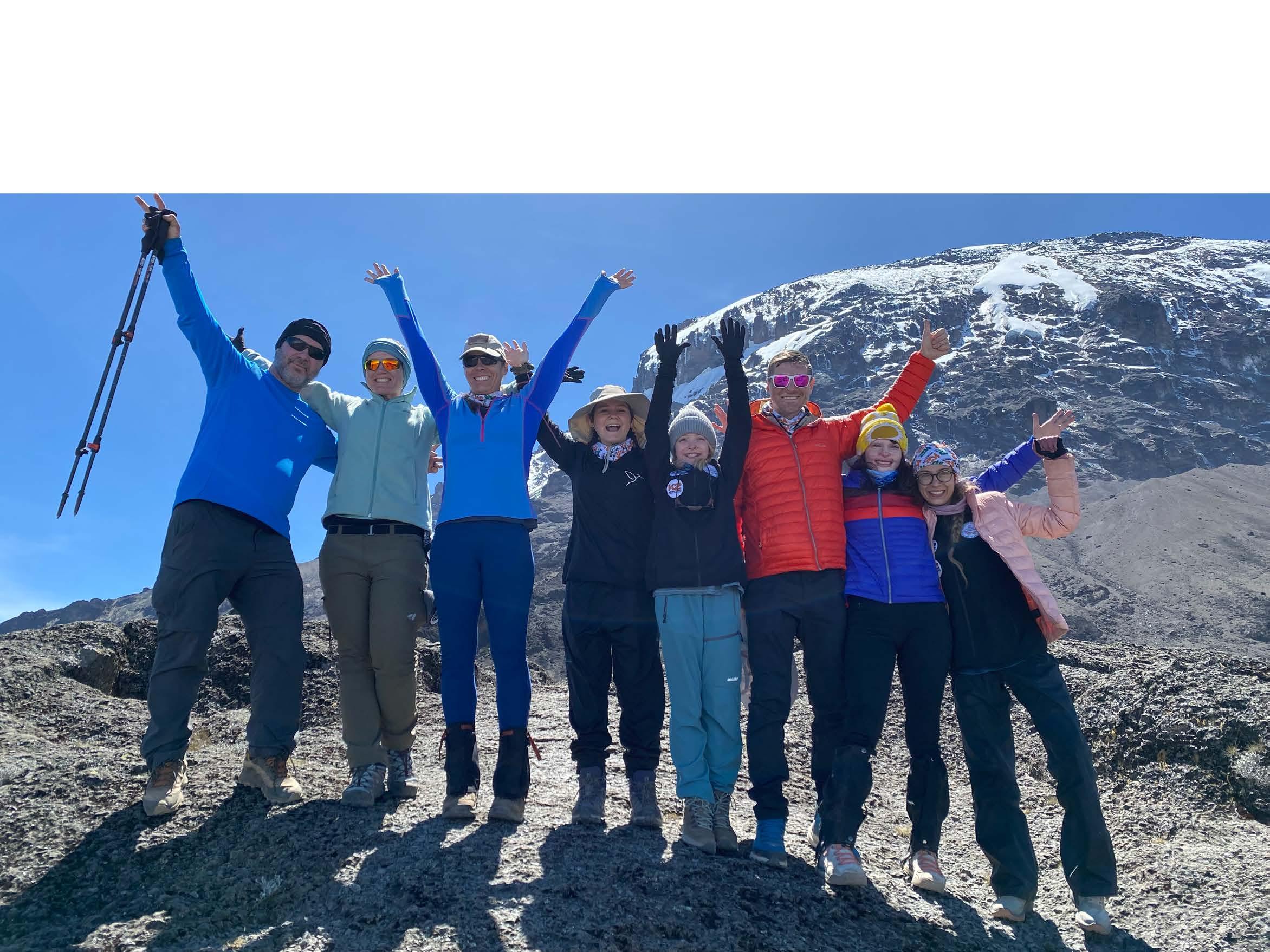
3 minute read
A Phoenix doctor helped burn victims recover. Then he helped them summit Mount Kilimanjaro.
They emerged from a Phoenix burn center with scars and a conviction to live full lives. But was their path to recovery on the slopes of Kilimanjaro?
LANE SAINTY, ARIZONA REPUBLIC
Advertisement
On the first day of his long ascent to the top of Mount Kilimanjaro, Dr. Kevin Foster was surrounded by a tangle of green. He had swapped his scrubs for hiking gear and exchanged a busy hospital ward for the lush tropical rain forest blanketing the base of Africa's highest peak. He had been walking uphill through the dense, humid foliage for hours.
As he hiked, an unsettling sentiment flickered across his mind. “This is going to be a lot harder than I thought.” Foster, who is 61, is no stranger to tough journeys. But he is usually helping others through them.
As director of the Arizona Burn Center, a position he has held since 2002, Foster has cared for people with injuries near inconceivable to those who haven’t lived them. Recovering from a bad burn, he says, is “almost like a siege.” And Foster has led thousands of them within the hospital’s beige and pale pink corridors. Still, he says: “I can’t imagine what it’s like.” With him on the trail ascending Kilimanjaro that day were eight people who can.
The survivors were different ages, from different walks of life. They had suffered their life-changing injuries in different ways: a plane crash, a structure fire, an infection of rare flesh-eating bacteria, a fire pit, a propane tank, a natural gas leak, a vape explosion.
But they had in common a long, tough recovery at the Arizona Burn Center in downtown Phoenix. There, they had lain in medically-induced comas. Endured unrelenting pain. Learned to walk again. Confronted their adjusted futures. And eventually, bearing scars they would manage for life, they had been discharged. Now they sought to climb Mount Kilimanjaro.
The imposing mountain reaches 19,341 feet into the skies above northern Tanzania, east of the Serengeti plain. It is an aggregate of three volcanoes, two of them extinct and the tallest, Kibo, dormant, with the potential to erupt again. On the rim of Kibo's crater is the summit peak, Uhuru, the Swahili word for freedom.
The survivors would journey there along the Machame Route, a 37-mile walk that winds through the rain forest before emerging onto a plateau, guiding hikers through a rocky landscape dotted with otherworldly, hydra-headed trees, and onward up to the summit. On June 17, when the survivors set off, Kilimanjaro's snow-capped peak was hidden from view.
That first day, they had to walk seven miles. Foster knew that in Phoenix, that distance would take him two and a half hours, max. But eight hours after stepping out on the Machame Route, the doctor and his former patients were still going. Foster wasn't worried they would get hurt. As mountains go, Kilimanjaro is not a dangerous climb for people who come prepared, who hike with a guide and keep a careful watch for altitude sickness. He was worried the survivors might not be able to do it. As he toiled through the jungle, another thought flashed by. “I may have made a really terrible error.”
The Survivors
Christian and Stephanie Nielson met in 2000 in her hometown of Provo, Utah, where he was attending Brigham Young University. Four months after their second date, they were married."We just fell in love," Stephanie says. "And that was that." By 2008, when the accident happened, they had moved to Mesa and were parents to four children: a first grader, a kindergartner, a three-year-old and an 18-month-old.
On August 16, 2008, the Nielsons were aboard a light Cessna aircraft piloted by Christian when trouble struck after take-off and they plummeted to the ground. Badly burned, the Nielson were rushed to the burn center and remained there until November, when Christian was discharged to a rehab center and Stephanie, burned over 83% of her body, was transferred to a different burn center in Utah.
It was a long — very long — road to recovery. But slowly, the Nielsons returned to life. They were able to take care of their children again, and even added another to their family. They now live in North Carolina, and say their faith in God was an integral part of their healing.
In January 2020, just before the pandemic turned everything upside down, Christian got a call. On the other end of the line was Nate Lowrie, Former CEO of the Valleywise Health Foundation. Together with Dr. Foster, he had been dialing burn survivors to ask a pretty big question. Want to go to Tanzania and hike Mount Kilimanjaro?

‘ABSOLUTELY
YES TO EVERYTHING’
“He gave a really nice pitch,” Christian remembers.
The Diane and Bruce Halle Arizona Burn Center will bring all facets of burn care together on one floor of the new Valleywise Health hospital. In the current hospital, built in 1971, the center is geographically scattered. The new unit will boast a pediatric wing and an area dedicated to outpatient therapy, physical and psychological. “I said ‘Nate, absolutely yes to everything,’” Christian says. “Yes to everything you just said, yes to Tanzania, yes to the new hospital, yes to anything we can do for the burn center and Dr. Foster and Valleywise, it's a yes." The Nielsons were all in.
Six other survivors got the same call, and one by one, they said yes.
VISIT AZCENTRAL.COM
TO READ THE FULL STORY, OR SCAN HERE >











